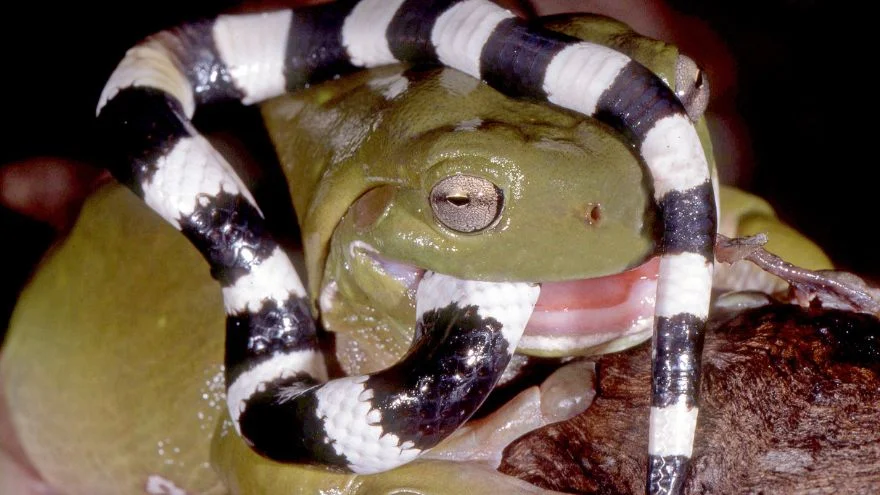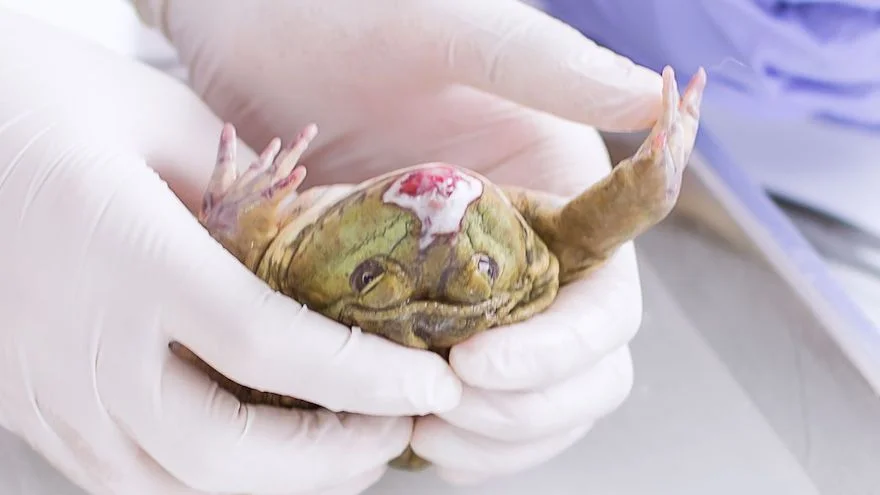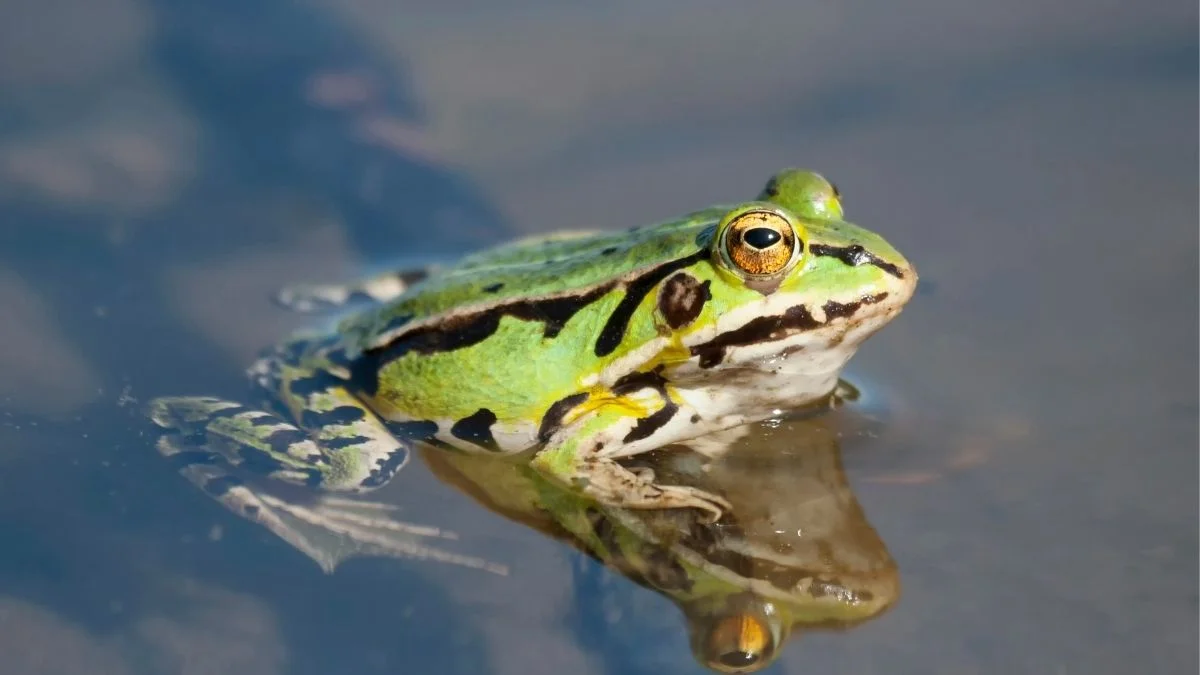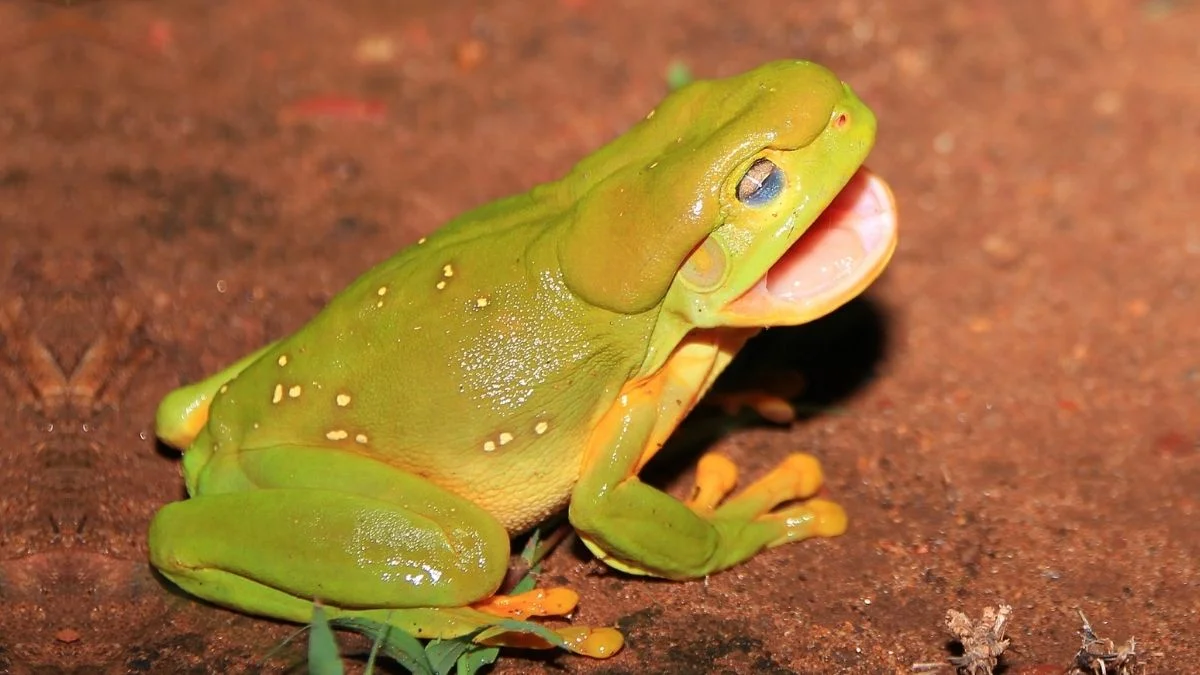Frogs are popular semi-aquatic tailless amphibians under the Anura order, and they can be found on all continents except Antarctica and a few islands.
They are popular because of their numerous population, and they make up the most populous Amphibian order.
There are many species in the world, getting up to 5,000. These individual species have their peculiarities but have various attributes in common.
We’ll explore all we need to know about these amphibians, from their scientific classification to how they behave.
Scientific Classification
| Kingdom | Animalia |
| Phylum | Chordata |
| Class | Amphibia |
| Clade | Salienta |
| Order | Anura |
Characteristics
| Height | 0.39 inches to 12 inches |
| Weight | 2g to 3,000g |
| Skin Type | Permeable |
| Venom/Poison | Yes |
| Habitat | Rainforests, swamplands |
| Range | Worldwide |
| Diet | Omnivore (Main prey includes flies, worms, and insects) |
| Life span | 1 to 8 years |
| Life Cycle | 3 to 25 days |
| Conservation status | Near Threatened |
5 Interesting Facts About Frogs
1. Frogs have no tails
What distinguishes a frog from other amphibians is the absence of a tail, which is what the order is named for. Anura is derived from the Greek word avoúpá which means “without a tail”.
This applies only to adults, however. Tadpoles have tails. These tails help them navigate their aquatic environments as they use the organ to swim.
When a tadpole grows, it becomes both terrestrial and aquatic. That’s when it loses its tail. One could call it a rite of passage.
2. They shed their entire skin!
Frogs have a shedding process that differs from many animals. They shed their skin to stop it from getting hard.
This is important because they breathe through their skin, which forms a part of their respiratory system.
The shedding process is called sloughing or molting, and during this period a frog will get rid of all its old skin. The skin then becomes a tasty snack.
These amphibians eat the dead skin, and while that may seem horrendous to us, it is normal for these hoppers. To an observer, a frog may seem to be choking while eating its skin. However, it isn’t.
3. They have excellent night vision
These folks see well at night, far more than a human could hope for. Though they don’t see far enough, their night vision is strong.
They have a special type of eyes which is sensitive to movement and able to spot objects at different angles.
The frog’s eyes can look front, shift to the sides, and go behind, giving it a field of vision of almost 180°.
The special vision these animals possess is an asset. It helps them detect both prey and predator, which enables them to feed and avoid becoming food.
4. They can kill a human
Not all species are toxic to humans, but you should be careful coming across one.
Many are poisonous, and some are fatal to humans. An example is the golden poison frog, one of which has a venom potent enough to kill ten grown men.
Even those that aren’t highly venomous could still carry infections like salmonella, which is transmitted via contact with a reptile or amphibian.
While salmonella isn’t life-threatening, it can cause complications for people like infants, children, and pregnant women.
5. Frogs form an army
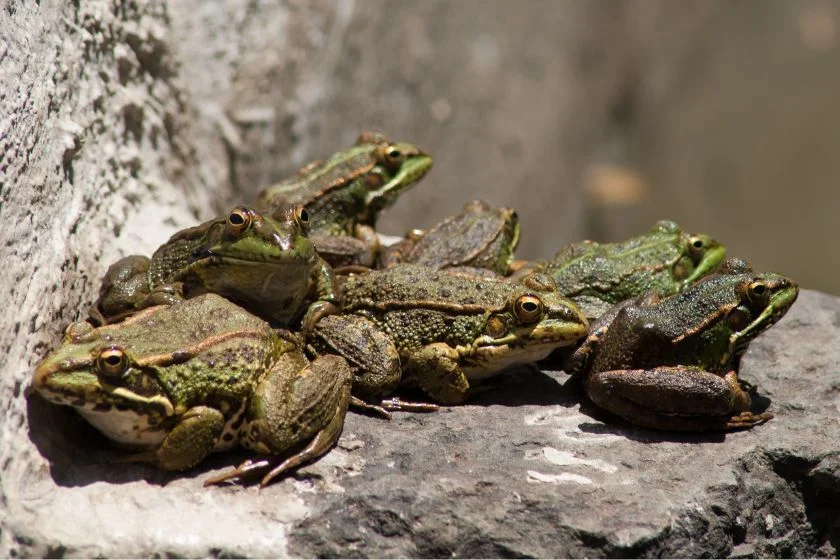
While they aren’t literal groups of soldiers going to war, the term used to describe a group is a military term.
While a group of fish is called a school and a group of wolves is called a pack, a group of frogs is called an army. The term ‘army’ refers to a collective, which flows well.
Army isn’t the only word used to describe a group of frogs. A group of males is called a chorus, and a group of growing ones is called a band.
Then those of the same age range is called a cohort. Other terms used include troop, colony, and bevy.
The military terms don’t mean that frogs are aggressive.
General Description
These animals are recognized for their smooth skin and leaping habits. They closely resemble the toad, but the latter is warty and prefers crawling rather than leaping.
Frogs also have long legs, while toads come with shorter ones. The former’s feet have webs that enable it to move while in water and also on land. These webs are also on the hands.
Other features includes protruding eyes, toxins, and different colors. The toxins serve as a form of protection against predators, but it isn’t always effective.
To protect themselves, some change colors to camouflage in their environment.
Highly toxic species could also have bright colors as a warning to predators.
Frog Behavior
Frogs tend to be solitary, and they have no social organizations or hierarchies.
They only come together and form a group when it’s time to breed, and after that, they move back to their lives. Individuals hunt and stay in their habitat on their own, often showing no need for social living.
The mating period is the only time the males make obvious sounds.
These are meant to attract females, but the danger is that they can also attract predators. Thus, they croak only when necessary.
Amphibians are cold-blooded, and that includes the frog. Without the ability to regulate the internal body temperature, our hopper friends need other ways to adapt.
They change behaviors in response to the weather, and you might find them going towards the sunlight to soak in the heat. During winter, they slow down their metabolism and hibernate.
Another behavior they exhibit is the ability to camouflage to avoid predators.
They do this by either changing colors or blending with the environment. They also take advantage of their long legs to leap away from a pursuing threat.
There’s the poison too. Some are highly poisonous to both humans and animals, while some aren’t too toxic to humans but distasteful to animals.
Then there are species that are neither highly poisonous nor distasteful but have bright colors that give such an impression.
Distribution and Habitat
Frogs have a wide range, which explains why they seem to be everywhere.
They can be found on every continent except Antarctica, and you wouldn’t see them on some islands too.
This distribution is due to the high number of species, as well as the invasive nature of some. They live in more tropical areas, and their major locations include:
- Asia
- Africa
- Europe
- Oceania
- North America
- South America
Their preferred habitats are often areas with both waterbodies and lands, such as rainforests and swampland.
Climate changes, human activities, and natural restrictions can limit their habitats, and during dry periods they bury themselves underground.
The rain brings them out, and they breed in pools. They also find most of their prey close to water bodies.
Some could live on trees, and you may even find a couple of them in your environment.
There are many ways you can get rid of them without harming anyone in the process. You could relocate the intruders or use repellents like vinegar to keep them away.
Frogs Diet
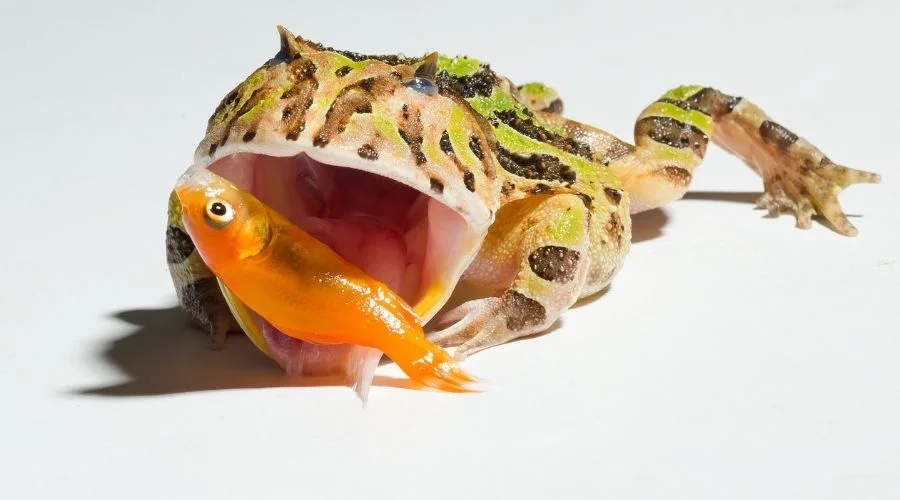
Taking into account all ages, frog species can be considered omnivores. However, adults are primarily carnivores.
Their major prey is insects, but because they can be opportunistic, they make do with whatever is in their environment.
Bigger species like the bullfrog hunts down reptiles, rodents, and even other frogs.
Individuals have different hunting methods. Some adopt a more passive method where they wait for prey to pass by and then they trap as many as they can with their tongues.
This is the method often associated, but not all use this. Some are active hunters, pursuing their prey and pouncing on it.
The major tools they use to hunt are their tongues, night visions, and leaping abilities.
When eating, they use their teeth to hold the prey in place before using their eyeballs at the top of their mouth to force the food down the throat.
Tadpoles have a wider diet. As growing organisms, they feed on both plant and animal matter. Tadpoles can even be cannibalistic, though only on some occasions.
Frog Lifecycle and Mating Process
A frog’s lifecycle is complex, and during that process, it undergoes several changes to become the hopping adult now seen today.
This occurs in the first two months to three years of life, with the aquatic tadpole becoming a full adult that lives in both land and water.
The tadpole has a tail, but no limbs. It is also oval, has gills that it breathes with, and a skeleton made of cartilage.
As it grows, it loses the tail and develops lungs, giving it the ability to breathe on land. Some species don’t have a tadpole stage, however. They start as froglets.
There are two forms of reproduction amongst frogs: prolonged breeding and explosive breeding.
Prolonged breeding is the more common type, and it starts from the coming together of adults at a pond to mate.
They usually return to the pond they develop as larvae, leading to a yearly migration.
Under explosive breeding, adults move to the breeding site thanks to factors like climate change. Mating is fast amongst species that use this form of reproduction, and the larvae grow fast.
Ever heard frogs croaking around ponds? Chances are, you’re witnessing males making mating calls to attract the females.
This occurs mainly with species that use the prolonged breeding form. Males arrive at the breeding site before the females, then use the croaks to attract them.
The more attractive males have deeper croaks, and females make their pick based on the depth of the sound.
There are males called satellite frogs that display a different set of behavior. They grab a female that’s going to meet another male.
Frog Predators and Threats
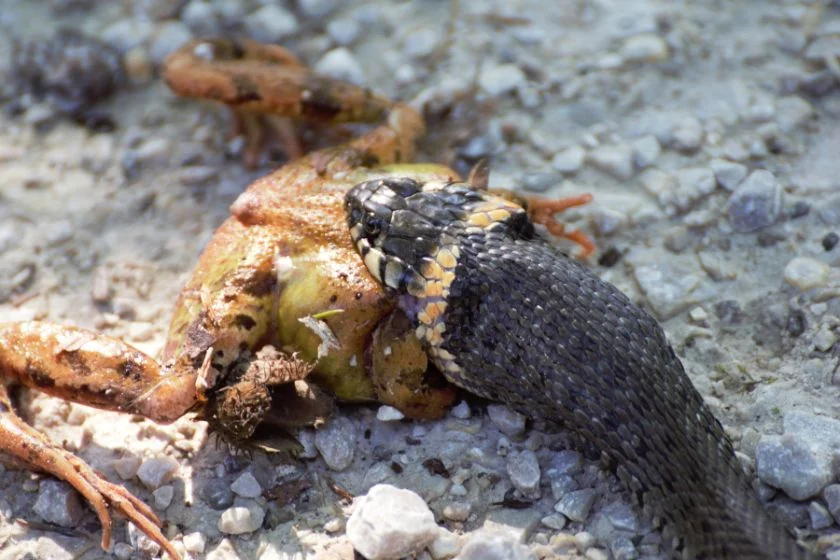
Frogs are threats to insects, but they also have animals that threaten them too.
In addition, they get threatened by erratic climate change, disease, pollution, and habitat loss from human activities. Let’s look at the predators.
These guys are preyed upon by animals like birds, otters, water shrews, reptiles, lizards, snakes, and small mammals.
Generally, any bigger animal that lives around the frog’s habitat may constitute a threat to it.
Frogs do protect themselves (as we pointed out above) but that doesn’t stop them from being prey.
Male vs Female
Frogs are sexually dimorphic, and the first difference between both sexes is their size.
Females are bigger than males and given their reproductive roles, this shouldn’t be a surprise. Females hold the eggs and need a lot more body space to do that.
There are some exceptions to this, but the general size rule favors females. In some species, the difference isn’t much, but in others, you can notice it.
Males are the only ones that croak, so when you hear croaking in your yard, those are the dudes.
The deeper croaker tends to attract the best female, which could explain why they are often loud. Because they croak, males also have a vocal sac that makes the throat expand.
There are also some distinctions in their hands, feet, and arms. Males have slightly different colors on their hands, and they come with bigger arms.
Frequently Asked Questions
Are frogs and toads the same?
Frogs and toads are similar and they both are classified the same. However, they are different animals. Toads have warty skin, and shorter legs and tend to be bigger than their lookalikes. Because of their stronger skin, toads can stay out of water for a long time. Frogs have smoother skin and long legs, and they tend to leap.
Can a frog be a pet?
Many pet parents opt for frogs as a preferred pet, and they are more popular as pets than others. Do well to pick a species that isn’t poisonous, and you’ll need the right conditions for the frog to thrive. Get an enclosure that befits its size, have heaters to heat them, and ensure that its environment is moist.
Do people eat frogs?
Not all species are edible to humans, but some are. An example is the American Bullfrog which is eaten in North America, and it has a lot of flesh to satisfy people.
Can a frog be at a zoo?
They can be found in zoos worldwide, especially in exotic species. While some are risky to meet in the wild, in the confines of a zoo they can be a delight to observe. An example is the notorious golden poison.
How many frogs are there
There are currently about 5000 species in existence, but the total population is unknown. Unfortunately, the population has been declining due to numerous factors, and due to their importance in the environment, this is a problem.
What is the biggest frog species?
The biggest living species is the goliath frog, also known as the giant slippery frog and the goliath bullfrog. As all the name shows, the goliath frog is large, reaching up to 32cm in length and weighing up to 3.25 kg.
What is the smallest frog species?
The smallest living species is the Paedophryne amauensis, which is also the smallest known animal with a backbone.
Wrap Up
Frogs are an important part of the environment, and the amphibians have their lifestyle and survival methods.
Their mating process, gender differences, feeding method, and protection are all part of what makes a frog what it is.
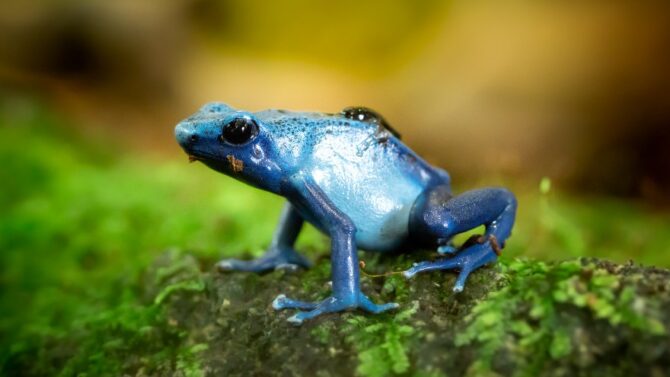
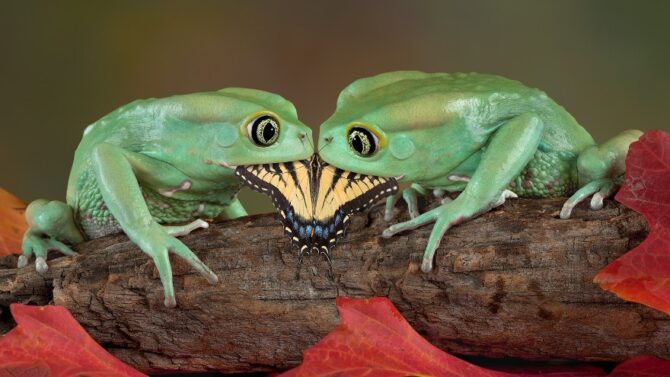
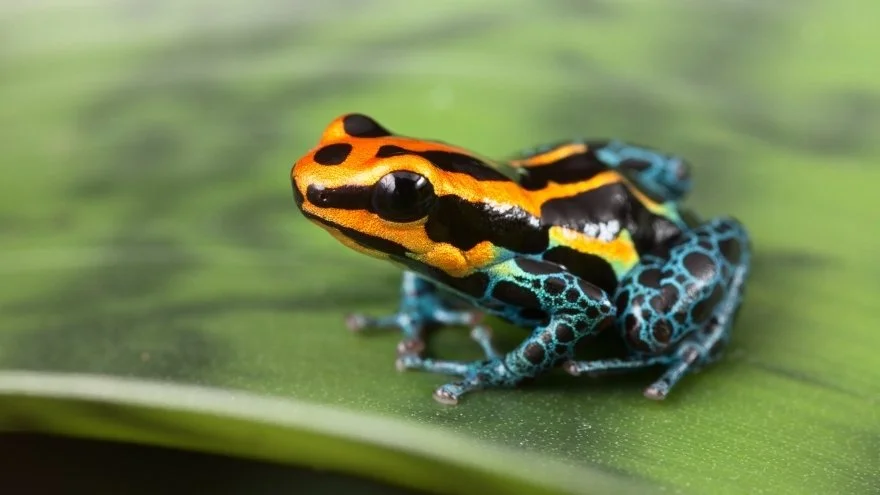
![How Long Can Frogs Go Without Food Or Water [Answered]](https://animalvivid.com/wp-content/uploads/2022/08/How-Long-Can-Frogs-Go-Without-Food-Or-Water-Answered.jpg.webp)
